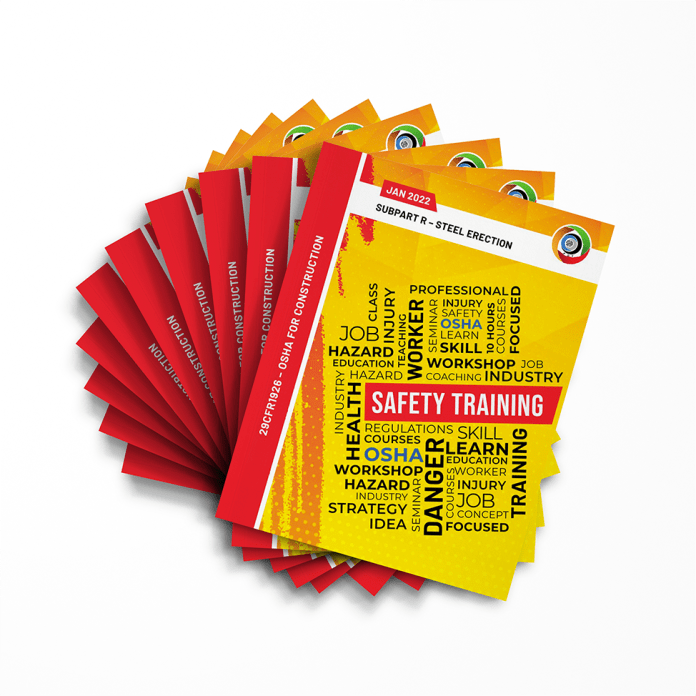Steel erection involves constructing, altering, or repairing steel buildings, bridges, and related structures. It furthermore involves the assembly, connection, & installation of steel beams, metal decking, and planking employed for erecting a steel structure. Steel workers performing steel erection jobs are generally employed in building, contracting, and construction firms.
The Occupational Safety and Health Administration (OSHA) recognizes steel erection to be one of the 10 most hazardous jobs in the US and has formulated regulations to promote safety of workers at workplaces.
Hazards In Steel Erection Process
Here is a list of the major identified hazards involved in the steel erection process:
Materials – transferring or hauling heavy tools and handling heavy suspended loads.
Tools – working with tools required for connections exposes workers to falling object hazards.
Design – working with structural components of irregular shapes and unstable loads during rigging.
Process – walking on narrow and irregular surfaces, to the other side to forge connections, & to the center of the element for unhooking; operating at high elevations; and interacting with moving equipment.
OSHA’s Construction Standards, termed the 29 CFR 1926, covers OSHA steel erection regulations under Subpart R. Data from OSHA reveals that steel erection accidents causing fatalities are often because of the following factors:
- Unanticipated crane disconnections before the piece was secured.
- Workers docking or placing a load on unstable or unabridged joists.
- Workers being hit by objects while moving or working under a load.
- Workers being hit by objects while docking a load or making a connection, by a slipped tool; or by a piece of decking being blown off a pile when fall protection is not provided or used.
- Negligence in using provided fall protection systems even if the worker was wearing a safety harness.
- Stepping on or working on unstable decking that slid out of place when fall protection was not provided or used.
- Workers not being tied while at the workstation.
- Moving or standing on the beam/joist where fall protection was not provided or used, causing slips, trips, and falls.
- Flying metal splinters; working with a chisel and hammer; and performing sharpening, cutting, or welding works without using Personal Protective Equipment (PPE), leading to eye injury.
- Lifting and moving heavy loads, resulting in back and spinal column injury.
- Contacting live electrical wires or working with portable electrical tools which can cause electrocution.
- Being exposed to high noise levels.
The Bottom Line
Each of the OSHA steel erection regulations has its inherent starting point. Pay attention to it that each of these starting points has a caveat. If you are working over some equipment or object into which you could fall and seriously hurt yourself, then you need to be protected from doing so; notwithstanding you are just inches above it. All the rest of the requirements get overridden. To improve steel erection safety, it is necessary to provide employees with work clothes that are appropriate for the conditions of the workplace. Also necessary is performing regular maintenance and routine checks on portable power tools and equipment, etc.


